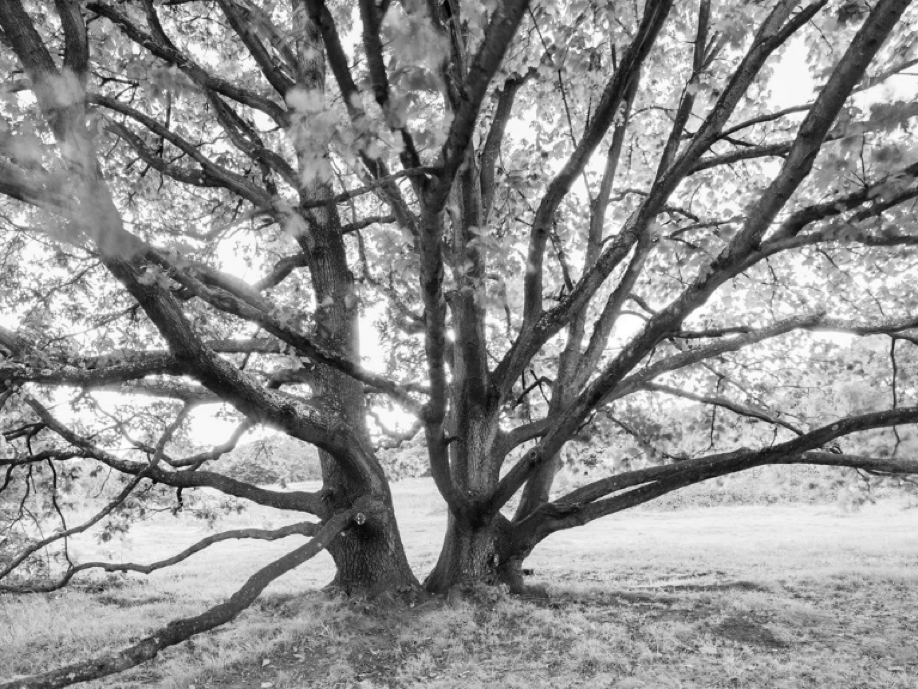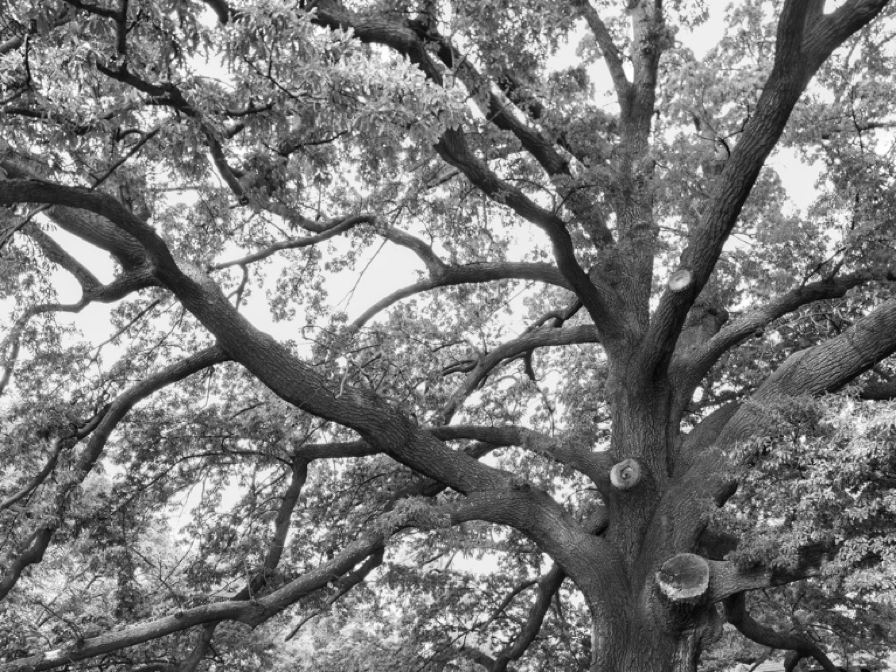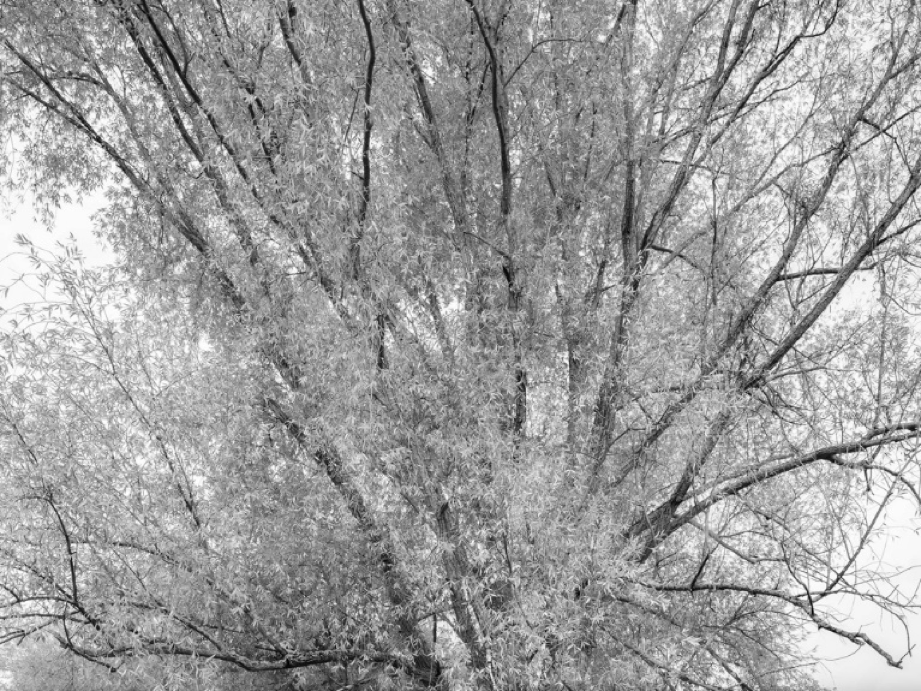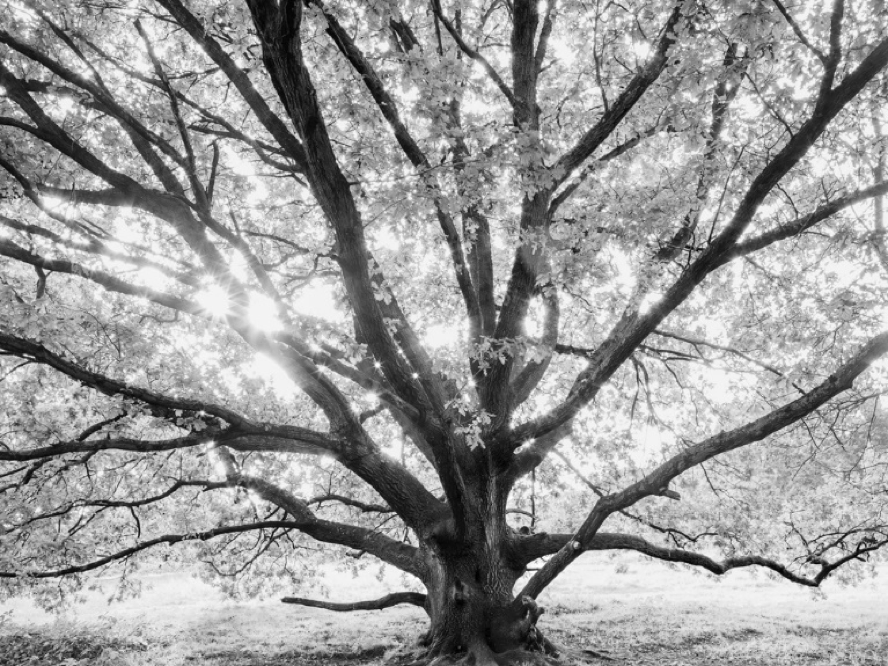
Lewis Bush, Lecturer, Photojournalism and Documentary Photography, London College of Communication and Taylor Norton, Writer, Photographer and Graduate of London College of Communication
Seeking to reclaim the term ‘speculative pedagogy’ from its neoliberal connotations, this article adapts James Auger’s notion of speculative design, imagining alternatives to current forms of education. Reclaiming this concept, we propose a speculative pedagogy which prioritises learning in nature, more particularly, in trees. This mode of teaching and learning – dubbed ‘arboreal pedagogy’ – attempts to take advantage of the numerous cognitive, physical and emotional benefits associated with trees to boost learning and well-being amongst students and staff.
pedagogy; nature; well-being; exercise; trees; speculative design
The term ‘speculative pedagogy’ is used by Dahlstedt and Tesfahuney to describe a neo-liberal, entrepreneurial view of education. In their words, it is a model that ‘strives to both capitalize knowledge, schooling or learning and realise immediate returns’ (Dahlstedt and Tesfahuney, 2010, p.250). We seek to reclaim their term and also adapt James Auger’s notion of speculative design, which is a way of developing plausible futures through imaginative fictions and imagine alternatives to current educational dogmas (Auger, 2013, p.11). By adapting speculative design to the context of arts education, this article proposes a ‘speculative pedagogy’ that prioritises learning in nature, a setting which has many potential teaching and learning benefits. This conjectural mode of teaching and learning, which we have called ‘arboreal pedagogy’, takes trees as the focal point for outside learning sessions. Doing this attempts to take advantage of the numerous cognitive, physical and emotional benefits associated with trees and natural settings as a means of boosting learning and the well-being of students and staff.

University teaching, even of the often practical and creative subjects taught in art colleges, largely involve indoor and classroom-based activities. Yet, many lecturers have at some point conducted a session outside, a change in setting usually borne out of necessity during fire drills or very hot weather. The prospect of an outside lesson often fills students (and sometimes even staff) with a positive sense of anticipation, with participants viewing these sessions as a welcome break from the norms of classroom activity, and an opportunity for a different learning experience. Learning outside the controlled space of the classroom is often more dynamic, student centred and involved, with students engaging in deep learning as they apply theoretical knowledge to practical situations and challenges (Jacobi-Vessels, 2013).
Our method of arboreal pedagogy imagines that a small group of teachers and students identify a suitable tree together, climb it as a group, conduct a learning activity within it, and then descend together at the end. Practical group sizes are evidently determined by the type and size of tree, ranging from a one-to-one ratio for smaller climbable species like birch or poplar, through small seminar sized trees, to larger classes in varieties such as mature beech and oak trees. A variant of arboreal pedagogy for groups that are unable to climb, is that classes are conducted at ground level as near a tree as possible, ideally maintaining direct physical contact with its bark.

Learning in nature has a long history, stretching back to the nature inspired pedagogy of romanticist Johann Heinrich Pestalozzi in the late eighteenth century and arguably reaching a peak with the Forest School movement, which emerged in the 1920s and has been growing in popularity over the past twenty years (Cree and McCree, 2012). Contemporary research supports the methods developed by these antecedents, suggesting that spending time in nature and tree climbing in particular have a variety of physical, psychological and cognitive benefits.
Tree climbing is excellent physical exercise and relatively safe. It requires no specialised equipment and is possible in a wide variety of settings and climates. It encourages a high degree of inclusion as a learning activity, with careful selection of the tree by the group being an important aspect of this arboreal approach: any species can provide a wide variety of challenges to those climbing it (Cooke, 2017). Appropriate clothing and a briefing on basic safety and climbing techniques is important in maximising physical benefits and minimising risks. Safety techniques can be readily adapted from outdoor rock climbing or bouldering, a well-developed practice where small groups of climbers work together to navigate low lying rock faces. Other adaptable techniques include non-climbing participants acting as ‘spotters’ who are responsible for observing and protecting a climber whilst climbing and in the event of a fall, which participants can learn to do with minimal training.
There is extensive research suggesting that close contact with nature and trees can have a variety of positive psychological effects. Studies have linked spending time in nature with benefits such as improved healing rates (Ulrich, 1984) and reduced stress levels (Jiang et al., 2016). Even a moderate increase in greenery in urban areas has been demonstrated to result in higher health perception, with significantly fewer cardio-metabolic conditions occurring amongst those inhabiting that area (Kardan et al., 2015). Research conducted by the University of Derby suggests that direct contact with trees results in greater life expectancy, a higher sense of ‘meaningfulness’, decreased cortisol production and better body image (Richardson et al., 2016). Other studies have demonstrated clear benefits from tree climbing and recent discoveries are being applied in the emergent field of tree-assisted therapy. In Japan there has long been recognition of the general health benefits of shinrin-yoku or ‘tree bathing’ and in recent years tree climbing has been employed to mitigate depression with promising results (Gathright, Yamada and Morita, 2008). These benefits are particularly significant when applied in a large urban centre like London, where issues of mental health and stress are common problems.
These attributes contribute to a learning context where students and staff learn better, and feel better. Having reached the crown of the tree or another suitable spot where participants are able to rest comfortably, the main learning activity can commence. Clearly certain activities are more suited than others to this environment, with seminars and discussion groups being ideal, and technical activities or those requiring specialist equipment being more problematic. The climbing process acts as a warm up, preparing students for critical engagement and discussion as well as fostering an atmosphere of trust and togetherness in the group. The unique teaching location can also be used as a vehicle to introduce students to a range of relatively abstract practices and ideas, by using the tree and its surroundings as a living illustration. Arboreal pedagogy can be useful for explaining different conceptions of learning and knowledge, for example offering a direct, tangible way to articulate the difference between traditional hierarchical forms of knowledge (represented by the tree’s roots, trunks and branches) and non-hierarchical models of knowledge (represented by the rhizomatic growth of the grass surrounding the tree) (Cormier, 2011).

As outlined earlier, arboreal pedagogy is speculative and whether these benefits are borne out in practice is a question that requires further research. Studies undertaken in Japan suggest that participants with a greater affinity for trees are likely to derive greater benefits from proximity to them, and so a degree of student self-selection may be an important factor in maximising the benefits of arboreal pedagogy. There is also evidence that tree type is an important factor in the Japanese study referred to earlier in this article (Gathright, Yamada and Morita, 2008). This proved to be an important factor in defining whether the experience of climbing the tree was fun, scary or pleasant for participants in this study. The species was an important determinant of changes in tension – anxiety, depression, anger, hate – as well as of vitality (Gathright, Yamada and Morita, 2008). This is most likely a result of the physical differences between different species and their resultant tactility and climbing experience. Common sense would suggest certain species including oaks, mulberries and elms, are likely to produce the most comfortable and accessible climbing experience and thus have the greatest benefit. Other species such as monkey puzzle trees, pines or large cacti are likely to induce a negative experience, as ascending and sitting in them may create physical discomfort. More field research is needed to identify the most suitable and safe trees, exploring accessibility, cultural associations, and species which are protected from climbing by local laws.
Arboreal pedagogy, while notional and in many respects completely impractical, considering increasing emphasis upon health and safety and the challenges of supervising very large student cohorts, is proposed here as a incitement against often unimaginative methods of teaching in art and design education. We consider it, and our broader concept of speculative pedagogy, to be less a practical road-map than a provocative call for teachers to embrace creative and low-tech approaches to education that celebrate experiences that enrich the well-being and learning of students and staff alike. We also see it as a rallying cry against institutional cultures increasingly marked by managerialism, bureaucracy and technocracy, things which while often touted as being in the best interests of learning, just as often seem to obstruct or undermine it. Provocative reappraisals like arboreal pedagogy remind teachers that they can and should connect more directly with their students, and that education at its best can be simple, engaging and arboreal.

Alloway, R.G. and Alloway, T.P. (2015) ‘The working memory benefits of proprioceptively demanding training: A pilot study’, Perceptual and Motor Skills Journal, 120(3) p.766–75. https://doi.org/10.2466/22.PMS.120v18x1.
Auger, J. (2013) ‘Speculative design: Crafting the speculation’, Digital Creativity, 24(1). pp.11–35. https://doi.org/10.1080/14626268.2013.767276.
Cooke, J. (2017) The tree climber’s guide. London: Harper Collins.
Cormier, D. (2011) ‘Rhizomatic learning – why we teach’, Dave’s Educational Blog, 5 November. Available at: http://davecormier.com/edblog/2011/11/05/rhizomatic-learning-why-learn/ (Accessed: 26 November 2017).
Cree, J. and McCree, M. (2012) ‘A brief history of the roots of forest school in the UK. Part 1’, Horizons: Professional development for outdoor practitioners, (66, Winter), pp.32–34.
Dahlstedt, M. and Tesfahuney, M. (2010) ‘Speculative pedagogy: Education, entrepreneurialism and the politics of inclusion in contemporary Sweden’, Journal for Critical Education Policy Studies, 8(2), pp.250–274. Available at: http://www.jceps.com/archives/650 (Accessed: 26 November 2017).
Gathright, J., Yamada, Y. and Morita, M. (2008) ‘Tree-assisted therapy: Therapeutic and societal benefits from purpose-specific technical recreational tree-climbing programs’, Arboriculture and Urban Forestry, 34(4), p.222–229. Available at: http://joa.isaarbor.com/articles.asp?JournalID=1&VolumeID=34&IssueID=4 (Accessed: 26 November 2017).
Jacobi-Vessels, J.L. (2013) ‘Discovering nature: The benefits of teaching outside of the classroom’, Dimensions of Early Childhood, 41(3), p.4–10.
Jiang, B., Li, D., Larsen, L. and Sullivan, W.C. (2016) ‘A dose-response curve describing the relationship between urban tree cover density and self-reported stress recovery’, Environment and Behaviour, 48(4), pp.607–629. https://doi.org/10.1177%2F0013916514552321.
Kardan, O., Gozdyra, P., Misic, B., Moola, F., Palmer, L., Paus T. and Berman, M. (2015) ‘Neighborhood greenspace and health in a large urban center’, Scientific Reports, 5. https://doi.org/10.1038/srep11610.
Richardson, M., Cormack, A., McRobert, L. and Underhill, R. (2016) ‘30 days wild: Development and evaluation of a large-scale nature engagement campaign to improve well-being’, PLoS ONE, 11(2). https://doi.org/10.1371/journal.pone.0149777.
Ulrich, R. (1984) ‘View through a window may influence recovery from surgery’, Science, 224(4647), pp.420–421.
Lewis Bush is a photographer, writer, curator and educator. After a background in history and international development he began to practice documentary in 2012. His work explores forms of contemporary power, ranging from the destructive impact of corporate redevelopment on his home city of London, to the systemic inequalities of the art world. Bush has written extensively on photography, and between 2011 and 2016 he also ran the Disphotic blog. He has curated numerous exhibitions and is lecturer in documentary photography at London College of Communication, and a visitor at many other institutions.
Taylor Norton has a Bachelor’s in Journalism from the University of Cincinnati and a Master’s in Photojournalism and Documentary Photography from the London College of Communication. She is a writer and photographer whose work explores the relationship between words and visual expression. Her work includes a variety of mediums including photography, film, essays, and books.